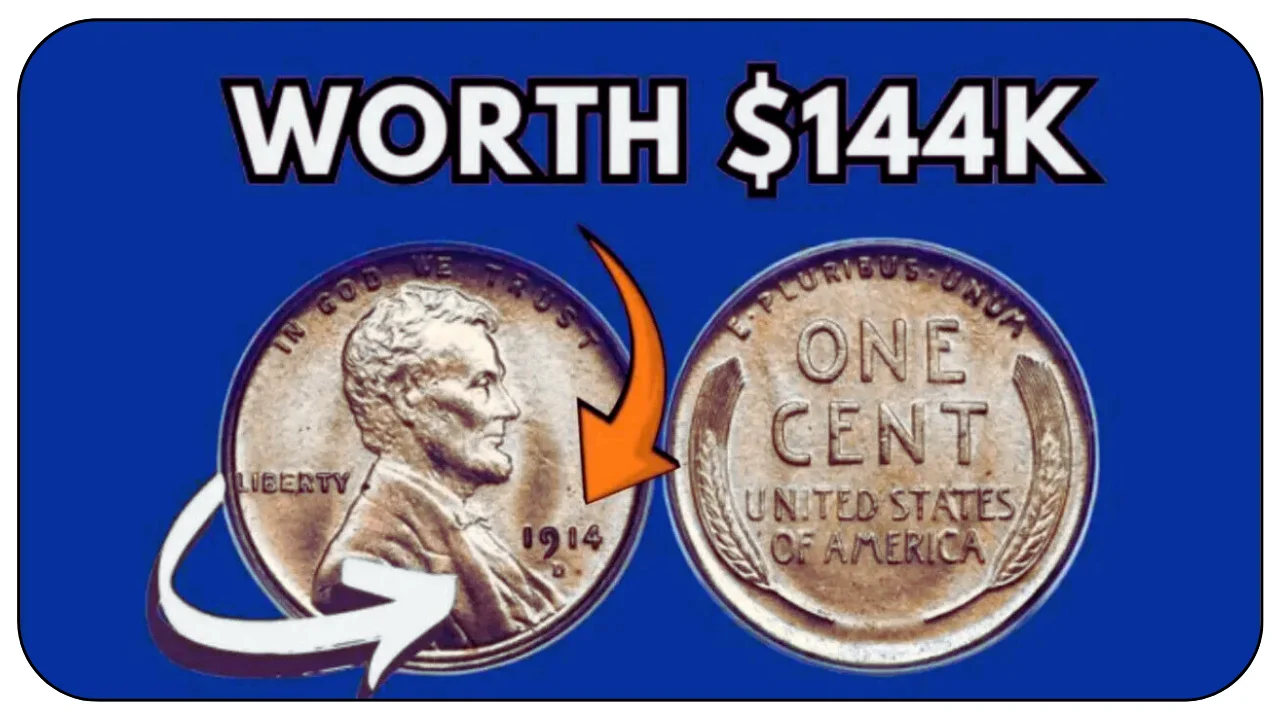You might have a small fortune sitting in your pocket or an old jar of coins. The Lincoln Wheat Penny, a coin that’s been around for over a century, could be worth as much as $144,000 if you have the right one. These pennies, first minted in 1909, are still out there in circulation, and some rare versions are highly sought after by collectors. Let’s dive into what makes these coins so special, how to spot one, and why you should check your change.
A Piece of History
The Lincoln Wheat Penny was introduced to honor the 100th anniversary of Abraham Lincoln’s birth. Designed by Victor David Brenner, it was the first U.S. coin to feature a president’s portrait. The “wheat” part comes from the two wheat stalks on the back, which were part of the design until 1958. While millions of these pennies were made, a few rare ones stand out because of errors or low mintage, making them incredibly valuable today.
The Rare Ones to Look For
Not every Lincoln Wheat Penny is worth a fortune, but certain years and mint marks can make your coin a hidden gem. The most valuable is the 1909-S VDB penny, which has the designer’s initials (VDB) on the back and was minted in San Francisco (marked with an “S”). Only 484,000 of these were made, and in top condition, one recently sold for $144,000 at auction. Other rare pennies include the 1914-D, 1922 No D, and the 1955 Double Die, which can fetch thousands of dollars.
| Year | Mint Mark | Estimated Value |
|---|---|---|
| 1909-S | VDB | Up to $144,000 |
| 1914-D | D | $500–$10,000 |
| 1922 | No D | $1,000–$15,000 |
| 1955 | Double Die | $1,000–$2,000 |
How to Spot a Valuable Penny
Finding a rare penny is easier than you think, but you need to know what to look for. Check the date and mint mark, which is a small letter below the date (S for San Francisco, D for Denver, or no letter for Philadelphia). The condition matters too—coins in great shape with sharp details are worth more. For example, the 1955 Double Die penny has a noticeable doubling in the date and lettering, making it stand out. Grab a magnifying glass and start inspecting your coins!
-
- Look at the date and mint mark first.
-
- Check for errors like double lettering or missing marks.
-
- Compare your coin to pictures of rare pennies online.
-
- Keep coins in good condition; don’t clean them, as it lowers their value.
Where These Pennies Turn Up
You don’t need to dig through a museum to find these treasures. Lincoln Wheat Pennies are still found in pocket change, old coin rolls, or family heirlooms. Check places like coin jars, piggy banks, or your grandpa’s old desk drawer. Coin collectors and dealers often say that people stumble across these pennies by chance, so it’s worth taking a second look at any old coins you have lying around.
What to Do If You Find One
If you think you’ve got a rare penny, don’t rush to spend it! Take it to a professional coin dealer or get it graded by a service like PCGS or NGC. These experts can confirm if your penny is genuine and estimate its value. Cleaning or mishandling the coin can ruin its worth, so store it in a protective holder. With some luck, that penny in your pocket could turn into a life-changing payday.
The Lincoln Wheat Penny is more than just pocket change—it’s a piece of history that could make you rich. Next time you’re sorting through coins, take a closer look. You never know when a tiny piece of copper could turn out to be a $144,000 treasure waiting to be discovered.
